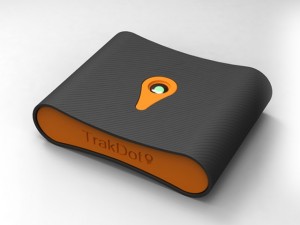December 21, 2012
The end of the year = predictions for the upcoming year. All of them are interesting but the one I really put stock in is JWT‘s annual trends report. They invest a huge amount of time and money to explore and investigate our culture and I’m always impressed by the line-up of experts they reach out to, before they release their report.
Check out their trends for 2013 in this 2 minute video and then you can read a little from JWT’s Director of Trendspotting, Ann Mack as she answers a few of my questions about the trends and how they impact you.
[youtube]http://www.youtube.com/watch?v=bCDs7zQELpM[/youtube]
The ten trends for 2013 are: (buy the complete 177 page report here)
- Play As a Competitive Advantage
- The Super Stress Era
- Intelligent Objects
- Predictive Personalization
- The Mobile Fingerprint
- Sensory Explosion
- Everything Is Retail
- Peer Power
- Going Private in Public
- Health & Happiness: Hand in Hand
I had a chance to ask Ann Mack (JWT’s Director of Trendspotting) a few questions. Here’s what she had to say:
What trend surprises you the most?
It’s hard to pick, as I’m so close to these trends and find all of them interesting and significant in their own ways. However …
One trend I find really interesting is what we call Going Private in Public. In an era when living publicly is becoming the default, people are coming up with creative ways to carve out private spaces in their lives. Rather than rejecting today’s ubiquitous social media and sharing tools outright, we’re reaping all the benefits of maintaining a vibrant digital identity while gradually defining and managing a new notion of privacy for the 21st century.
Consumers are quickly coming to realize that ultimate control of their online privacy is out of their hands—even for those who diligently tweak the privacy settings on their profiles. With a few lines of code, Web titans can destroy carefully walled gardens, turning the task of maintaining the desired degree of privacy into an onerous chore. While Facebook users have periodically taken to posting privacy or copyright notices under the mistaken impression that these declarations will protect them, users remain subject to the social network’s terms of service.
It’s not just the Web powers-that-be that can toy with a person’s public persona, however—it’s also tag-happy, share-happy friends who don’t realize that just because something is public information or done in public doesn’t mean people want it publicized.
So the social-media savvy are finding ways to put some privacy back into their public lives, pruning friends lists, hosting photo-free “dark rooms” at parties to deter social media–sharing and creating Facebook pseudonyms to avoid the prying eyes of employers and others.
This is a compelling opportunity for brands, as they can amplify these existing behaviors. Argentina’s Norte Beer, for instance, found a clever way to ensure that “What happens in the club stays in the club” with an amusing innovation: a beer cooler that keeps drinkers safe from paparazzi-in-training. Distributed to various bars around Argentina, the Photoblocker emits a bright light when it detects the flash from a photo, making any images unusable. Nearby drinkers can safely party without fear of wide exposure.
If you were advising a business owner — which trend would you call to their attention first?
One trend we look at for 2013 which is important for business owners to consider is the rise of Peer Power. As the peer-to-peer marketplace expands in size and scope—moving beyond goods to a wide range of services—it will increasingly upend major industries, from hospitality and education to tourism and transportation. This is a culmination of a number of developments we’ve spotlighted in our Things to Watch over the years—from Couchsurfing in 2008 to Crowdfunding in 2009 to Micro businesses like Airbnb in 2011 to Crowdsourced Learning and P2P Experiences in 2012.
As P2P companies begin to disrupt major industries, many established players will turn to existing laws and regulations to limit their growth. But there are alternative (or parallel) paths that big brands can take that are less knee-jerk and more forward-thinking. For one, they can use the emergence of this new competitive set as an opportunity to rethink how they operate or position their B2C businesses in this growing P2P economy. And they can examine what kinds of new behaviors and expectations the P2P model is creating among consumers and start delivering against those.
Rather than fear or fight the encroachment of this new competition, established brands can embrace this development through a variety of means. Perhaps the easiest is to partner with peer-powered businesses in the same or related categories. BMW, for instance, took a minority stake in ParkatmyHouse through its i Ventures venture capital arm, which aims to extend the company’s range of products and services over the long term by investing in innovative mobile service providers.
Taking it one step further, brands can add a P2P element to their business or launch a business line that addresses a newly created demand or challenge to their industry. For instance, high-profile universities including Stanford and Princeton are participating in MOOCS (massive open online courses), via new ventures like Coursera, rather than fight the tide of free or low-cost online courses, many taught by amateurs.
In partnering with these upstarts or launching their own version of a P2P service, established brands can infuse freshness or modernity into their persona, broaden their appeal and/or get an existing consumer segment to look at them in an interesting new light. Initiatives such as this also provide the opportunity to learn more about the audience, inner workings, and strengths and weaknesses of P2P enterprises.
Looking at the trend list as a whole — what do you think it says about the last few years?
New technology continues to take center stage, as we see major shifts tied to warp-speed developments in mobile, social and data technologies.Many of our trends reflect how businesses are driving, leveraging or counteracting technology’s omnipresence in our lives, and how consumers are responding to its pull.
Looking back, which of the 2012 trends do you think fell flat or didn’t really come to fruition the way you expected a year ago?
Any trends with real significance can’t be assigned to just one calendar year. The trends we explore on an annual basis have significant weight and momentum, and indicate shifts that are likely to be with us for a while. That is why we track our trends from past forecasts on an ongoing basis. As for our 2012 trends, we continue to see them play out in new and numerous ways.
“Celebrating Aging” is one of those trends. Last year, we observed: “Popular perceptions of aging are changing, with people of all ages taking a more positive view of growing older. As demographic and cultural changes, along with medical advances, help to shift attitudes, we’ll redefine when ‘old age’ occurs and what the term means.”
This year we saw that development reflected in product development, marketing and entertainment. Earlier this year, for instance, MAC cosmetics launched a collaboration with 91-year-old style standout Iris Apfel. The collection is inspired by colors favored by Apfel, a longtime interior and textile designer who’s come into the spotlight in her twilight years. We also saw the critically acclaimed movie, The Best Exotic Marigold Hotel—described by Time as “a charming celebration of aging”—become a surprise box-office hit. The film by director John Madden follows a group of British retirees moving to India to live in an old hotel and features acting heavyweights Maggie Smith and Judi Dench, both of whom turn 78 this year.
Another trend from our 2012 forecast, “Objectifying Objects,” continues to gain momentum. As objects get replaced by digital/virtual counterparts, we’re seeing more people fetishize the physical and tactile. This is giving rise to “motivational objects,” or items that accompany digital property to increase perceived value, and digital tools that enable creation of physical things.
This past year, for instance, we noted an increase in a range of new services that allow people to get to grips—literally—with their social media output, turning it into real-world items. MOO Inc. offers business cards created from Facebook users’ Timeline images and data, using the same fonts and layout; it includes the person’s Facebook URL. The Twitter Poster re-creates the customer’s profile picture using his or her tweets. And Stitchtagram is a service that crafts handmade pillows using fabric printed with the customer’s Instagram shots.
More
 When you think about it — being in the dark is always scary. When you were a kid, laying in bed and you heard a strange noise in your closet or under your bed you never thought to yourself, “hey, I bet there’s an ice cream sundae making machine in there!”
When you think about it — being in the dark is always scary. When you were a kid, laying in bed and you heard a strange noise in your closet or under your bed you never thought to yourself, “hey, I bet there’s an ice cream sundae making machine in there!”
 I totally get that you are trying to make a living and that someone at your radio station, newspaper, TV station, magazine etc. says that my client should be advertising with you. And maybe they should.
I totally get that you are trying to make a living and that someone at your radio station, newspaper, TV station, magazine etc. says that my client should be advertising with you. And maybe they should.
 There’s a
There’s a 
 One of the sure signs of a person who is going to be successful is that they wholeheartedly
One of the sure signs of a person who is going to be successful is that they wholeheartedly 
 At a recent jaunt to Disney World*, I found a great marketing reminder for us all. Right in front of the brand
At a recent jaunt to Disney World*, I found a great marketing reminder for us all. Right in front of the brand 

![image[1]](/images/2013/02/image1-300x200.jpg) For the past decade, we’ve been talking about experiential marketing. It’s not enough to create an awareness of your product — you need to, when you can, connect with your consumers (B2B or B2C) in as tangible and memorable a way as possible.
For the past decade, we’ve been talking about experiential marketing. It’s not enough to create an awareness of your product — you need to, when you can, connect with your consumers (B2B or B2C) in as tangible and memorable a way as possible.![image[4]](/images/2013/02/image4-300x200.jpg) A great example is what the folks at Axe have been up to. They’re launching a new line of product called Apollo.
A great example is what the folks at Axe have been up to. They’re launching a new line of product called Apollo.
 Normally at MMG, we caution clients to be careful of the “I don’t listen/watch/do therefore neither does my target audience” trap.
Normally at MMG, we caution clients to be careful of the “I don’t listen/watch/do therefore neither does my target audience” trap.



 Let me paint you a picture.
Let me paint you a picture.
